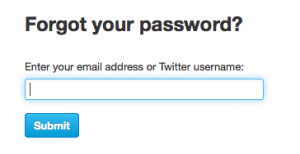I just got another one of these urgent, life-altering, panic-stricken email notifications from one of my followers on Twitter.
Dang, not again. Why all the hate?
It’s all a scam. In fact, you’ve probably seen a couple of these in the past. Before you start panicking and losing sleep, learn about what it is and why it arrived and you’ll feel just fine – and a little annoyed after it happens over and over again.
![]() This is a classic Phishing scam. (Phishing is a way of attempting to acquire information (and sometimes, indirectly, money) such as usernames, passwords, and credit card details by masquerading as a trustworthy entity in an electronic communication.)
This is a classic Phishing scam. (Phishing is a way of attempting to acquire information (and sometimes, indirectly, money) such as usernames, passwords, and credit card details by masquerading as a trustworthy entity in an electronic communication.)
Basically, at some point, someone clicked on that link. When that happened, a script would run (and malware is planted) and sent to random ‘followers’ of the person who clicked on the link. So now several people have the new message in their direct messages on Twitter and likely in email form if you have notifications set to send in Twitter.
If you were to click on the link, it would take you to a fake Twitter log-in screen. It would say your current session expired. And if you add in your info, viola – the scam stream starts anew.
What should you do if your Twitter account is compromised?
Change your password immediately (if you can):
- Log in to your Twitter account in the URL by typing http://www.twitter.com/ (DON’T click on the link in the email!) and click on your name in the top right hand corner.
- Click “Settings” and change your password to something that you’ll remember but won’t mean anything to anyone else (remember to include numbers, letters and special characters).
- Good job, you’re done and tragedy averted.
If you can’t change your password (because you’re locked out):
- Visit this link: https://twitter.com/account/resend_password
- Enter your name or email and you’ll receive an email to take care of the rest
Good luck, and remember, if people are talking about you – take it as a compliment! Just keep your Twitter account locked down.
Happy Tweeting.

Further Reading: Tips from Twitter’s Help Center
Lots of links are shared on Twitter, and many are posted with URL shorteners. URL shorteners, like bit.ly or TinyURL, create unique, shortened links that redirect to your longer link so it can be more easily shared. URL shorteners can also obscure the end domain, making it difficult to tell where the link goes to.
Some browsers have free plug-ins that will show you the extended URLs without you having to click on them. Here are links to plug-ins for Internet Explorer and Firefox (which is a free-to-download browser):
URL Expanders for Internet Explorer
URL Expanders for Firefox
In general, please use caution when clicking on links. If you click on a link and find yourself unexpectedly on a page that resembles the Twitter login page, don’t give up your username and password! Just type in Twitter.com into your browser bar and log in directly from the Twitter homepage.


The awkward moment when you get this terrible spam/phish from your boss. To click or not to click. I didn’t.